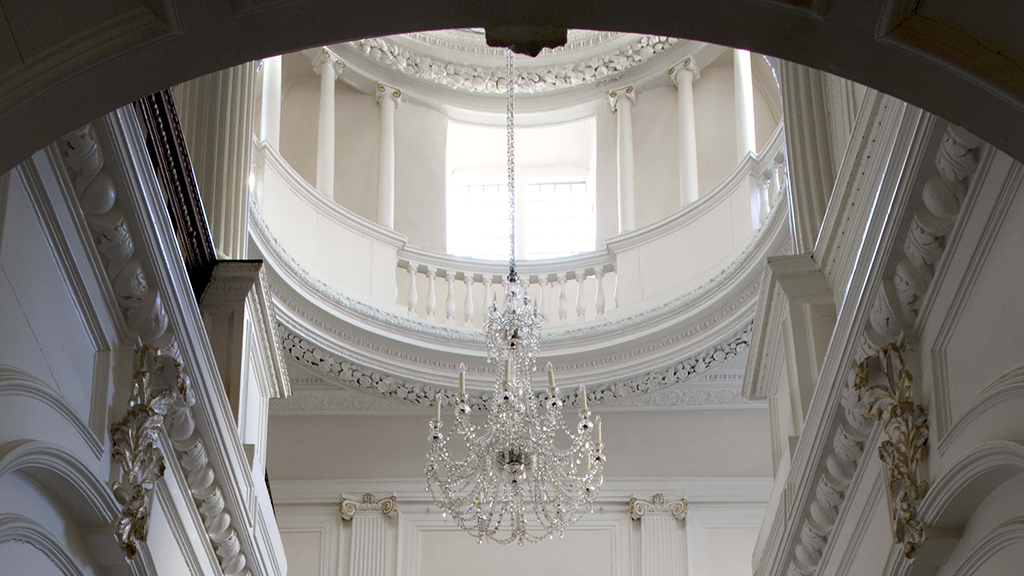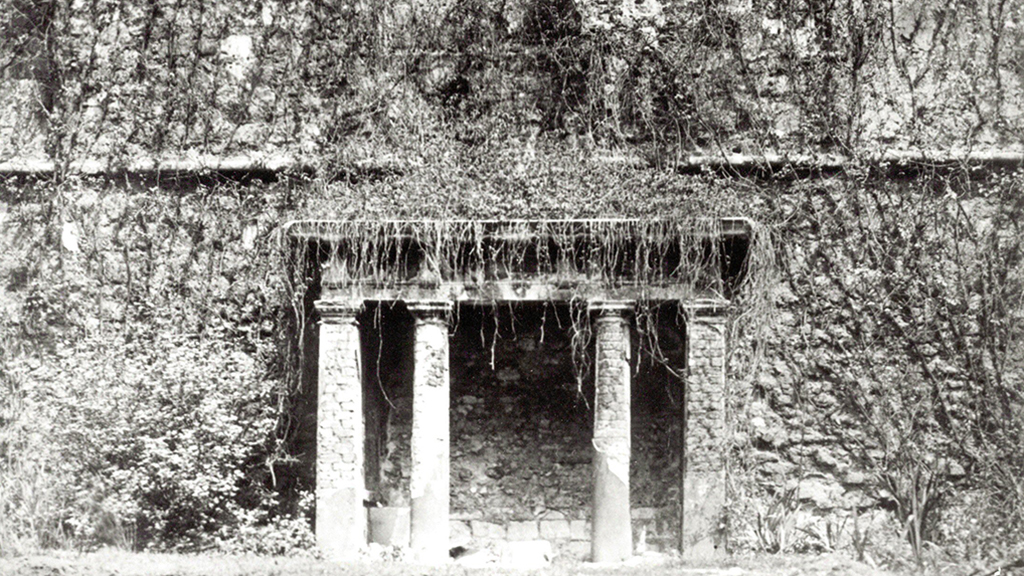 There are many landmarks at Westminster School but very few can match the Grand Staircase in Ashburnham House. It is approached through folding doors from the Inner Hall (formerly Ashburnham ‘Upper’) which retains its 17th Century panelling.
There are many landmarks at Westminster School but very few can match the Grand Staircase in Ashburnham House. It is approached through folding doors from the Inner Hall (formerly Ashburnham ‘Upper’) which retains its 17th Century panelling.
The hall has low proportions yet the staircase seems to rise from all this. The wide and shallow treads, the carved balusters juxtaposed with the ionic columns standing tall on the elliptical dome only add to its greatness. The flight of stairs that lead down from the top turn away towards the light.  There is then a perpendicular movement of the stairs towards the entrance creating an oblong landing. This creates a huge impression of spaciousness. The detail and description showed while producing the turn, vividly demonstrates the balance of the ornament along with simple construction.
There is then a perpendicular movement of the stairs towards the entrance creating an oblong landing. This creates a huge impression of spaciousness. The detail and description showed while producing the turn, vividly demonstrates the balance of the ornament along with simple construction.
There is controversy over the architect responsible: some make the case for John Webb, pupil of Inigo Jones, others prefer William Samwell, a gentleman amateur who lived nearby in Dean’s Yard. It is clear that the staircase has been inserted into a rather awkward position. This may have been determined by Sir John Fortescue’s pre-existing structure and also because of the difficulties that were caused by building further north.
The central chair on the landing underneath the window is famously said to have been a gift from Charles II to Dr Busby. On the next landing down, are the ‘ushers’ chairs which were occupied by masters at the school whilst teaching their forms.
There are several paintings hung of Old Westminsters and Head Masters above the staircase, including a recent portrait of Head Master Dr Spurr by artist Daphne Todd. Busts of Dr Busby, Inigo Jones and Charles Abbott provide the Grand Staircase with a great history and background.




